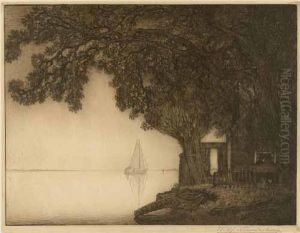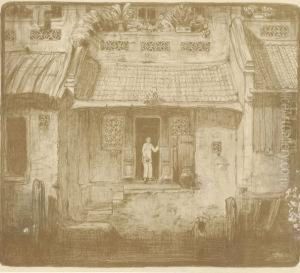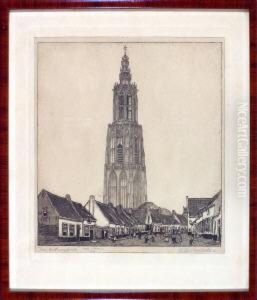Wynand Otto Jan Nieuwenkamp Paintings
Wynand Otto Jan Nieuwenkamp was a multifaceted Dutch artist, known for his work as an architect, painter, graphic artist, and ethnographer. Born on July 27, 1874, in Amsterdam, Netherlands, Nieuwenkamp developed an early interest in art and culture, which guided the course of his diverse career. He was a self-taught artist, which allowed him the freedom to explore and develop a unique style that was not bound by the conventions of formal art education.
Nieuwenkamp's work was profoundly influenced by his travels, particularly to Bali and other parts of Indonesia, at the turn of the 20th century. His journeys were not merely artistic pursuits; they were comprehensive ethnographic missions during which he meticulously documented the architecture, culture, and landscapes he encountered. His drawings, etchings, and writings from these travels provided one of the first detailed accounts of Balinese culture to the Western world, offering insights into the island's unique way of life, rituals, and artistry before significant external influences.
Beyond his artistic endeavors, Nieuwenkamp was an adventurous spirit. He designed and lived on a houseboat, the 'Woonboot,' which served both as a floating studio and a means to travel through Europe, including the waterways of the Netherlands and Italy. This nomadic lifestyle enriched his work with diverse influences and allowed him to create a vast and varied body of work that included architectural drawings, landscapes, and scenes of daily life.
Nieuwenkamp's contributions to art and ethnography were recognized in his time, and his works are still celebrated today. He played a crucial role in introducing and popularizing Balinese culture in Europe through his art and writings. Nieuwenkamp passed away on April 23, 1950, in Florence, Italy, leaving behind a legacy as a pioneer in the field of ethnographic study and as an artist who captured the beauty of the cultures and landscapes he loved. His works remain a vital record of a bygone era and continue to inspire artists and ethnographers alike.


